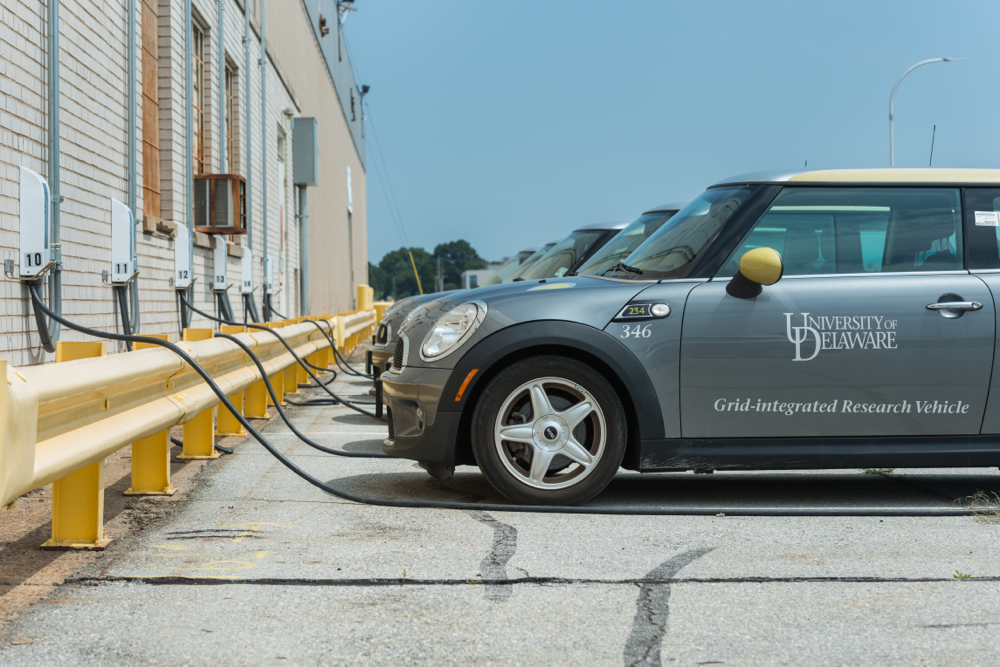The ability to have large numbers of electric cars store energy and feed it back into electric grids is still many years away, but researchers are studying how it could work in the real world.
Vehicle-to-grid technology is seen by some as a way to smooth out demand for grid electricity by using electric cars as mobile energy reserves, while possibly offering owners small payments from utilities for the service.
A fleet of test cars at the University of Delaware now sells power back to the grid, The Wall Street Journal reported late last month, and stores excess energy for utilities when it isn't needed to meet demand.
RELATED: Want To Lease A 2009 MINI E? If You Live In Delaware, You Can
The technology was developed by University of Delaware professor Willett Kempton, who has long been an avid proponent of the vehicle-to-grid vision.
It's being used in a pilot program at the university in conjunction with utility company NRG Energy, which also operates the eVgo network of electric-car charging stations.

MINI E electric cars used in vehicle-to-grid test. Photo by University of Delaware/Evan Krape
In practice, the cars essentially act as mobile energy-storage units. They absorb excess electricity from the grid during off-peak times, and discharge it when needed.
PJM pays for this extra capacity whether it uses it or not, and control software allows the cars to provide power back into the grid without completely draining their battery packs.
The fleet includes nine MINI E electric cars, three converted Scion xB tall wagons, and a Honda Accord Plug-In Hybrid, all modified for the project.
ALSO SEE: California Takes The Lead In Using Batteries For Grid Storage
Each car is equipped with a two-way onboard charger that allows it to discharge electricity into the grid, as well as a custom circuit board that controls the flow of power.
While the Delaware test is running smoothly so far, electric cars still probably won't be selling power back to the grid in large numbers for awhile.
For that to happen, plug-in cars would need to come with two-way chargers from the factory, which would add an estimated $200 to the cost of each new grid-compatible vehicle.
Moreover, carmakers are still unsure of how frequent charging will affect a battery pack's lifespan, so they likely won't add this feature until the effects on battery capacity from additional charge/discharge cycles not intended for road transport are much clearer.

MINI E electric cars used in vehicle-to-grid test. Photo by University of Delaware/Evan Krape
There are also regulatory issues to deal with.
The Federal Energy Regulatory Commission has passed rules allowing alternative energy-storage systems, but state and local regulatory bodies have been slow to follow its lead.
Organizers of the Delaware pilot program worked with state officials to make vehicle-to-grid operations explicitly legal, including getting a law passed by the state legislature.
In practice, an electric utility would have to contract with each electric-car-owning customer to pull energy from the car under specified circumstances, and negotiate a price for that ability.
Nonetheless, there is considerable interest in using electric cars to augment the grid.NRG reportedly plans to test whether an electric car can power a building, while the U.S. military plans to conduct vehicle-to-grid experiments at five bases, beginning this fall.
_______________________________________________












